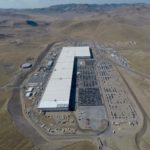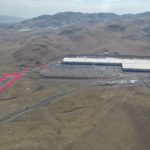

Energy
Tesla’s Gigafactory continues to reshape Reno: Transforming education, housing and the small business sector
Reno, a city just four hours away from Silicon Valley, has been home of Tesla’s Gigafactory – a city whose economy once chiefly relied on the low-wage casino industry, where bankruptcy and crime were frequent and unpredictable. Hit hard with the housing crash and recession, Reno fell into hard times in 2010 with a 14 percent unemployment rate. Once home to mostly thrifters and passersby, Reno’s outlook started to change with talks of Tesla’s plans for technological revitalization. Startups and incubators have been popping up to attract more millennials, new murals are being painted onto derelict walls, all are response to the hope that Tesla will be able to inject into the local economy sustainable, higher-paying jobs.
Tesla announced three years ago, in 2014, that construction would begin for its new Gigafactory in Reno, Nevada. As of now, battery cell production is well underway, and the factory has become the main production facility for Model 3 battery packs and drive units.
The introduction of Tesla into the region has not only infused Reno’s economy with jobs that have shifted it out of its economic drought, but also incentivized enrollment in neighboring schools, especially in STEM-related subjects. Nearby professors at the University of Nevada commented to eenews that the Tech Sector may be the area with the most secure employment base. The construction of the factory has provided over 4000 local jobs for the Reno economy, and will support close to 10,000 jobs when complete, up from a previous estimate of 6,500 jobs.
- Are we seeing a pathway leading from the main Gigafactory 1 facility leads to a new “parking lot”? [Photo: Teslarati]
Tesla Gigafactory flyover July 2017 captures parking lot expansion
This will in turn increase the retention rate at schools, both secondary and professional/university, creating a positive feedback cycle within the job sector and the education sector, thus securing the longevity of both. In fact, in 2013, a large part of the economic recovery was due to STEM jobs, driving unemployment down to 6.4 percent, reported the Atlantic. Additionally, STEM jobs pay from 28 to 68 more than non-STEM jobs.
The presence of Tesla is complemented by other tech companies such as Apple and Amazon, with more expected to come. It’s very likely that the landscape of Reno in the years to come will be vastly different than it was before the introduction of Tesla, and many experts and officials dub this the “Tesla Effect”.
Hillary Schieve, the Mayor of Reno, defined the “Tesla Effect” as “a positive shift toward changing Reno’s national perception for the better….Reno’s emerging neighborhoods, such as Midtown, downtown, and the Fourth Street corridor…due in large part to [the] booming technology industry with billions of dollars being invested from some of Fortune’s highest-ranked companies, which includes Tesla, Switch, Amazon and Microsoft.”
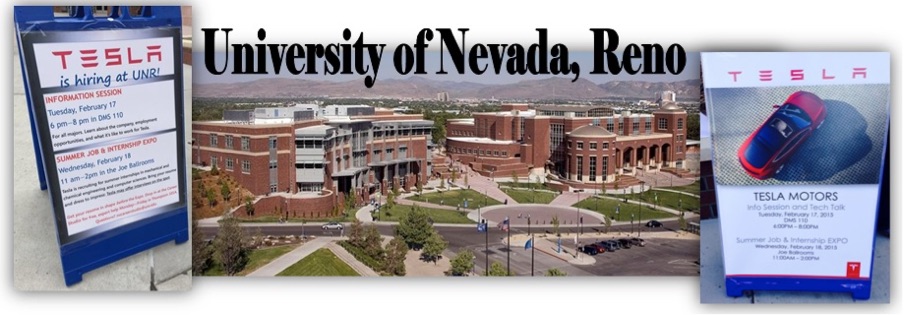
Tesla recruiting from the University of Nevada, Reno in 2015
The growth from the “Tesla Effect” extends beyond just the technology sector. Applied Economics presented a study in 2014 to Nevada Governor’s Office of Economic Development stating that “Tesla would be an important contributor to the region’s economy and could serve as a catalyst for additional manufacturing and logistics development in the region with its worldwide name recognition and cutting-edge technology. In addition, all of the jobs created by the company would be net new jobs thereby growing the economy both locally and regionally. The attraction of this company to Washoe County and Storey County would not only create a large number of new direct jobs, but also support a sizeable amount of additional economic activity, jobs and payroll at related local supplier and consumer businesses.” The study further broke down the revenues streams into different sections and explained where each calculated value was estimated from. You can see the full report here.
The presence of Tesla has pushed for market diversification within Reno. The building of the factory continues to draw in slews of local businesses to supplement the needs of both the factory and the people. Demands for food, supplies, gas and food will increase, bringing in more employment and more cash flow.
Drawing new businesses also could have the potential to diversify and infuse culture into the local neighborhood, highlighting flairs and quirks that will make it competitively attractive culturally to job seekers against neighborhoods such as the rich-cultured Austin.

Siena Hotel Spa & Casino in Reno, NV outside of nearby Tesla Gigafactory in Sparks. Source: Siena Hotel & Casino
With neighborhood changes, come real estate changes. The median rent prices along with the amount of rentals saw a sharp spike followed by a steady increase beginning around February 2017, according to trulia.com. But while the tech boom creates a great demand for apartments and housing, the boom does not seem like it would expand into areas stricken by poverty and food deserts so far. According to the Atlantic, the boom has not yet worked to create enough affordable housing, possibly stratifying the inequality levels in correlation to distance from the tech center. The consequence could be creating a real-estate scenario similar to that of San Francisco’s. However, better local government regulations and sanctions could possibly ameliorate the problem, since the factory has not officially opened all of its doors yet to potential job-seekers.
With the influx of jobs and traffic, infrastructure and transportation will be greatly impacted. According to the Reno Gazette Journal, “USA Parkway’s still-unbuilt 16 miles to U.S. Highway 50 in Silver Springs will be “fast-tracked” to completion in as soon as two years, they said, opening up access to Lyon County and the Dayton Valley and to Carson City beyond”. Increasing the connectivity of the community may better bridge the divides between individual counties and neighborhoods, and between Reno and the outside world, facilitating more efficient transfers of material, information and persons.
With shifting concerns and economies, cities are made to be more adaptable to the different cultural, demographic and social climates. Jobs markets created by fossil fuels will meet diminishing futures in face of environmental and climate concerns. The redirection towards clean energy leaves white space for the development and creation of jobs in the clean energy technologies. Creating a technological oasis centered around sustainability in complement with the current economy will secure both long term and short term profits. It will insure a steady revenue stream for the state and poise itself for the transition into a green future.
Energy
Tesla Lathrop Megafactory celebrates massive Megapack battery milestone
The Tesla Megapack is the backbone of Tesla Energy’s battery deployments.
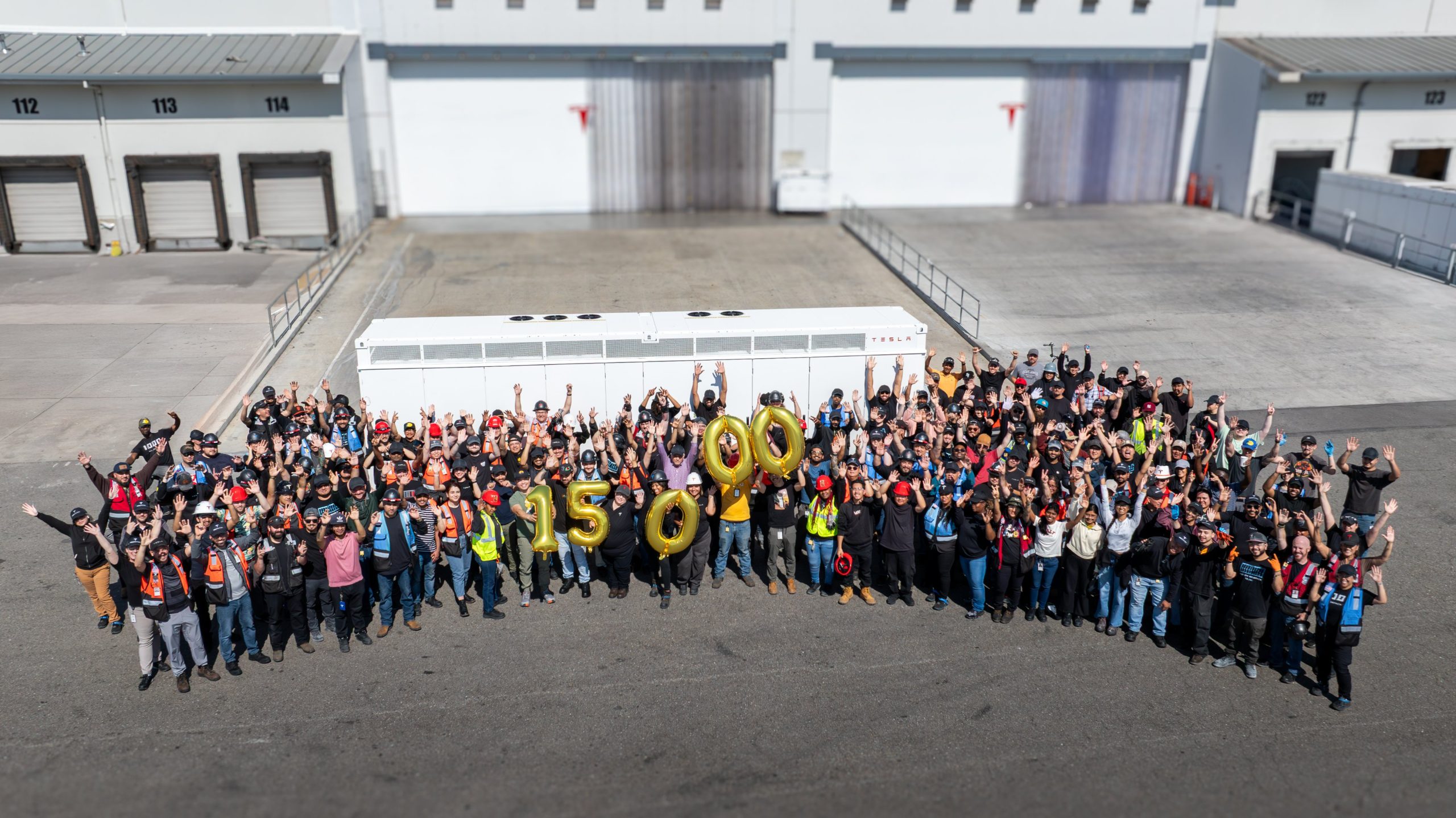
The Tesla Lathrop Megafactory recently achieved a new milestone. As per the official Tesla Megapack account on X, the Lathrop Megafactory has produced its 15,000th Megapack 2 XL battery.
15,000 Megapack Batteries
Tesla celebrated the milestone with a photo of the Lathrop Megafactory team posing with a freshly produced Megapack battery. To commemorate the event, the team held balloons that spelled out “15,000” as they posed for the photo.
The Tesla Megapack is the backbone of Tesla Energy’s battery deployments. Designed for grid-scale applications, each Megapack offers 3.9 MWh of energy and 1.9 MW of power. The battery is extremely scalable, making it perfect for massive energy storage projects.
More Megafactories
The Lathrop Megafactory is Tesla’s first dedicated facility for its flagship battery storage system. It currently stands as the largest utility-scale battery factory in North America. The facility is capable of producing 10,000 Megapack batteries every year, equal to 40 GWh of clean energy storage.
Thanks to the success of the Megapack, Tesla has expanded its energy business by building and launching the Shanghai Megafactory, which is also expected to produce 40 GWh of energy storage per year. The ramp of the Shanghai Megafactory is quite impressive, with Tesla noting in its Q1 2025 Update Letter that the Shanghai Megafactory managed to produce over 100 Megapack batteries in the first quarter alone.
Tesla Energy’s Potential
During the first quarter earnings call, CEO Elon Musk stated that the Megapack is extremely valuable to the energy industry.
“The Megapack enables utility companies to output far more total energy than would otherwise be the case… This is a massive unlock on total energy output of any given grid over the course of a year. And utility companies are beginning to realize this and are buying in our Megapacks at scale,” Musk said.
Energy
Tesla Megapacks powers the xAI Colossus supercomputer
Tesla Megapacks step in to stabilize xAI’s Colossus supercomputer, replacing natural gas turbines. Musk’s ventures keep intertwining.

Tesla Megapack batteries will power the xAI Colossus supercomputer in Memphis to ensure power stability. The collaboration between Tesla and xAI highlights the synergy among Elon Musk’s ventures.
The artificial intelligence startup has integrated Tesla Megapacks to manage outages and demand surges, bolstering the facility’s reliability. The Greater Memphis Chamber announced that Colossus, recently connected to a new 150-megawatt electric substation, is completing its first construction phase. This transition addresses criticism from environmental justice groups over the initial use of natural gas turbines.
“The temporary natural gas turbines that were being used to power the Phase I GPUs prior to grid connection are now being demobilized and will be removed from the site over the next two months.
“About half of the operating turbines will remain operating to power Phase II GPUs of xAI until a second substation (#22) already in construction is completed and connected to the electric grid, which is planned for the Fall of 2025, at which time the remaining turbines will be relegated to a backup power role,” the Chamber stated.
xAI’s rapid development of Colossus reflects its ambition to advance AI capabilities, but the project has faced scrutiny for environmental impacts. The shift to Megapacks and grid power aims to mitigate these concerns while ensuring operational continuity.
The Megapack deployment underscores the collaboration among Musk’s companies, including Tesla, SpaceX, Neuralink, and The Boring Company. Tesla appears to be the common link between all of Musk’s companies. For example, The Boring Company built a tunnel in Giga, Texas. In addition, Musk has hinted at a potential collaboration between the Tesla Optimus Bot and Neuralink. And from January 2024 to February 2025, xAI invested $230 million in Megapacks, per a Tesla filing.
Tesla Energy reported a 156% year-over-year increase in Q1 2025, deploying 10.4 GWh of storage products, including Megapacks and Powerwalls. Tesla’s plans for a new Megapack factory in Waller County, Texas, which is expected to create 1,500 jobs in the area, further signal its commitment to scaling energy solutions.
As xAI leverages Tesla’s Megapacks to power Colossus, the integration showcases Musk’s interconnected business ecosystem. The supercomputer’s enhanced stability positions xAI to drive AI innovation, while Tesla’s energy solutions gain prominence, setting the stage for broader technological and economic impacts.
Energy
Tesla Energy celebrates one decade of sustainability
Tesla Energy has gone far since its early days, and it is now becoming a progressively bigger part of the company.
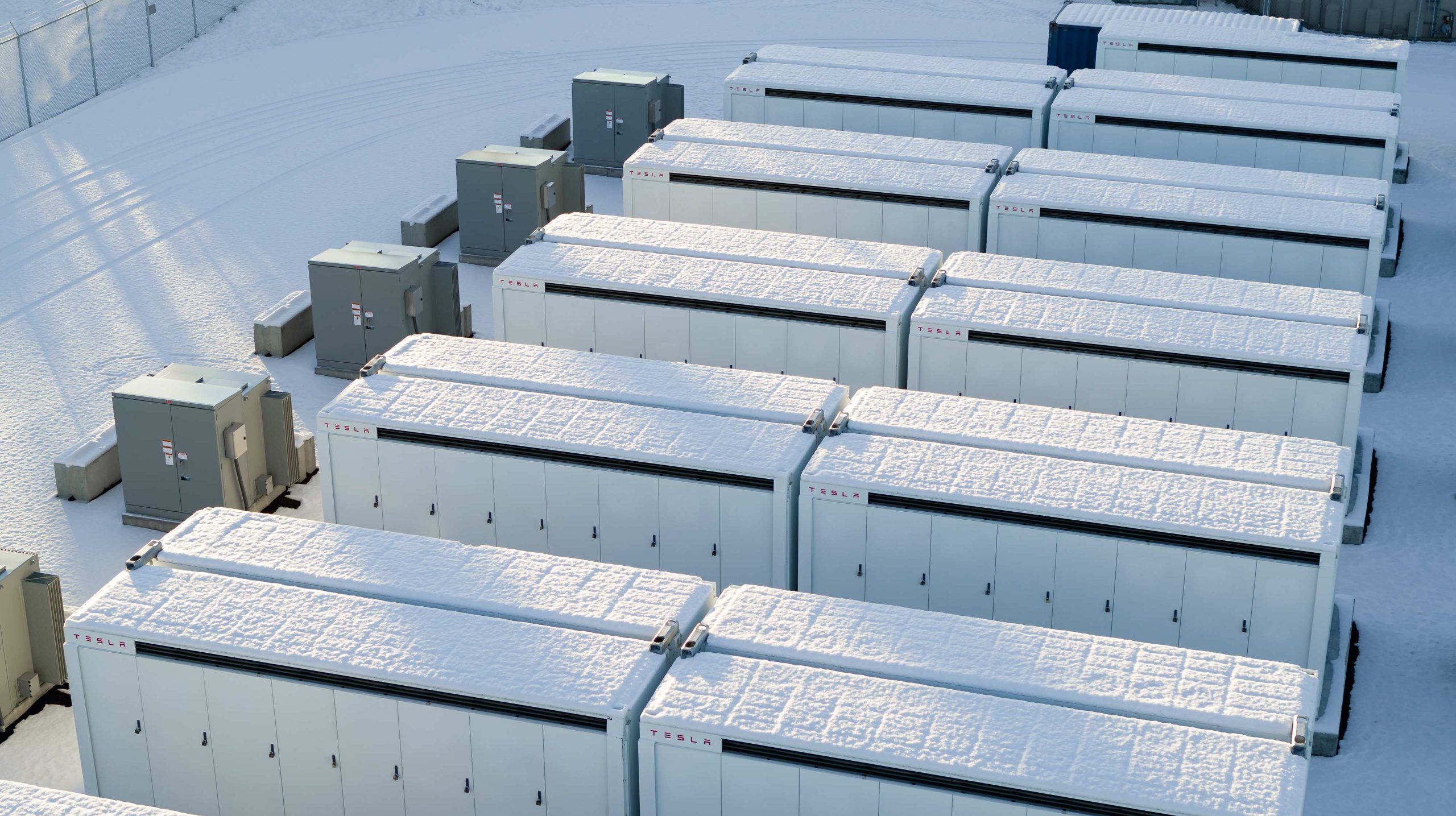
Tesla Energy recently celebrated its 10th anniversary with a dedicated video showcasing several of its milestones over the past decade.
Tesla Energy has gone far since its early days, and it is now becoming a progressively bigger part of the company.
Tesla Energy Early Days
When Elon Musk launched Tesla Energy in 2015, he noted that the business is a fundamental transformation of how the world works. To start, Tesla Energy offered the Powerwall, a 7 kWh/10 kWh home battery system, and the Powerpack, a grid-capable 100 kWh battery block that is designed for scalability. A few days after the products’ launch, Musk noted that Tesla had received 38,000 reservations for the Powerwall and 2,500 reservations for the Powerpack.
Tesla Energy’s beginnings would herald its quiet growth, with the company later announcing products like the Solar Roof tile, which is yet to be ramped, and the successor to the Powerwall, the 13.5 kWh Powerwall 2. In recent years, Tesla Energy also launched its Powerwall 3 home battery and the massive Megapack, a 3.9 MWh monster of a battery unit that has become the backbone for energy storage systems across the globe.
Key Milestones
As noted by Tesla Energy in its recent video, it has now established facilities that allow the company to manufacture 20,000 units of the Megapack every year, which should help grow the 23 GWh worth of Megapacks that have already been deployed globally.
The Powerwall remains a desirable home battery as well, with more than 850,000 units installed worldwide. These translate to 12 GWh of residential entry storage delivered to date. Just like the Megapack, Tesla is also ramping its production of the Powerwall, allowing the division to grow even more.
Tesla Energy’s Role
While Tesla Energy does not catch as much headlines as the company’s electric vehicle businesses, its contributions to the company’s bottom line have been growing. In the first quarter of 2025 alone, Tesla Energy deployed 10.4 GWh of energy storage products. Powerwall deployments also crossed 1 GWh in one quarter for the first time. As per Tesla in its Q1 2025 Update Letter, the gross margin for the Energy division has improved sequentially as well.
-

 Elon Musk2 days ago
Elon Musk2 days agoTesla investors will be shocked by Jim Cramer’s latest assessment
-

 News1 week ago
News1 week agoTesla Robotaxi’s biggest challenge seems to be this one thing
-

 Elon Musk2 weeks ago
Elon Musk2 weeks agoElon Musk slams Bloomberg’s shocking xAI cash burn claims
-

 News2 weeks ago
News2 weeks agoTexas lawmakers urge Tesla to delay Austin robotaxi launch to September
-

 Elon Musk1 week ago
Elon Musk1 week agoFirst Look at Tesla’s Robotaxi App: features, design, and more
-

 Elon Musk2 weeks ago
Elon Musk2 weeks agoTesla Robotaxis are becoming a common sight on Austin’s public roads
-

 Elon Musk2 weeks ago
Elon Musk2 weeks agoxAI’s Grok 3 partners with Oracle Cloud for corporate AI innovation
-

 Elon Musk2 weeks ago
Elon Musk2 weeks agoSpaceX President meets India Minister after Starlink approval


